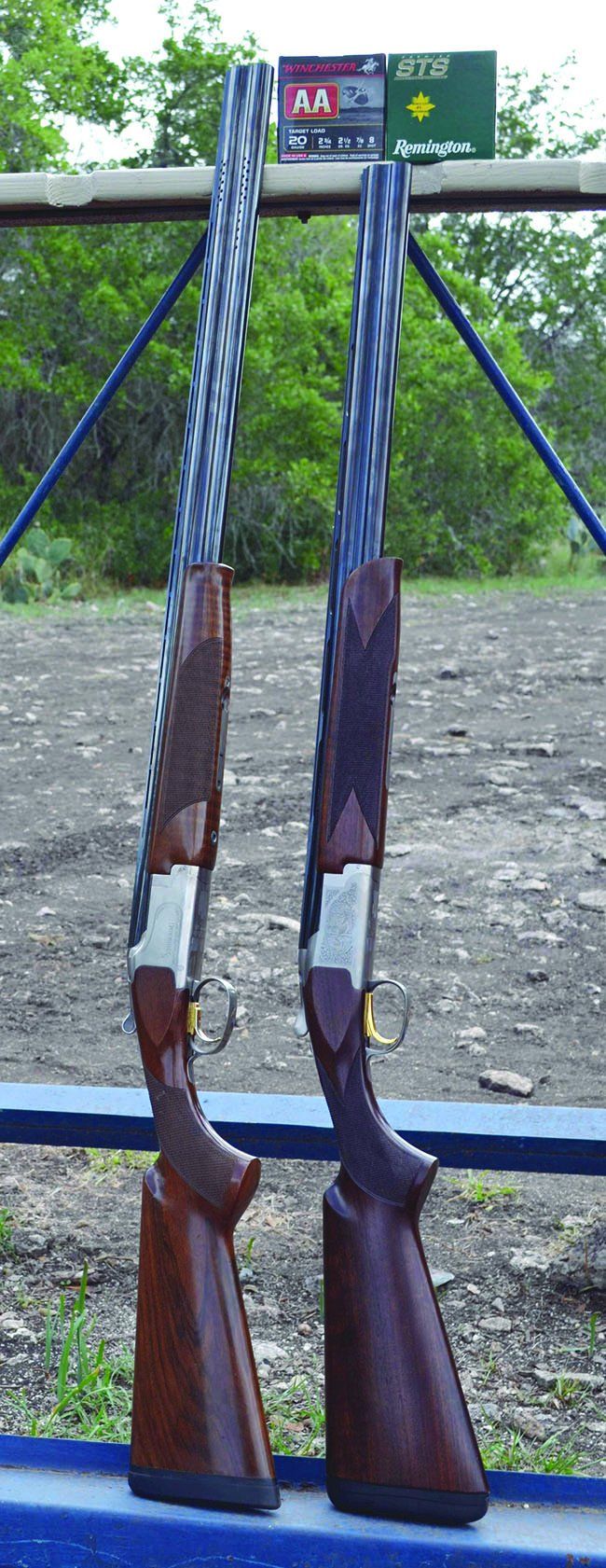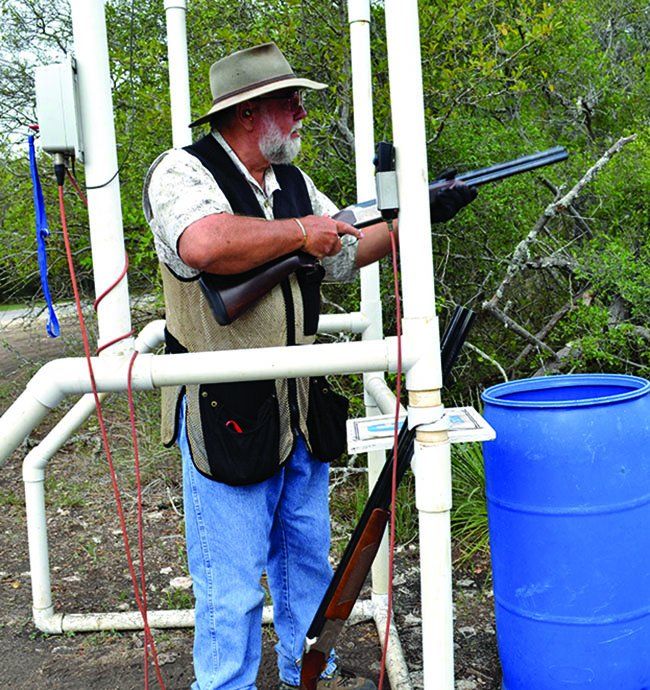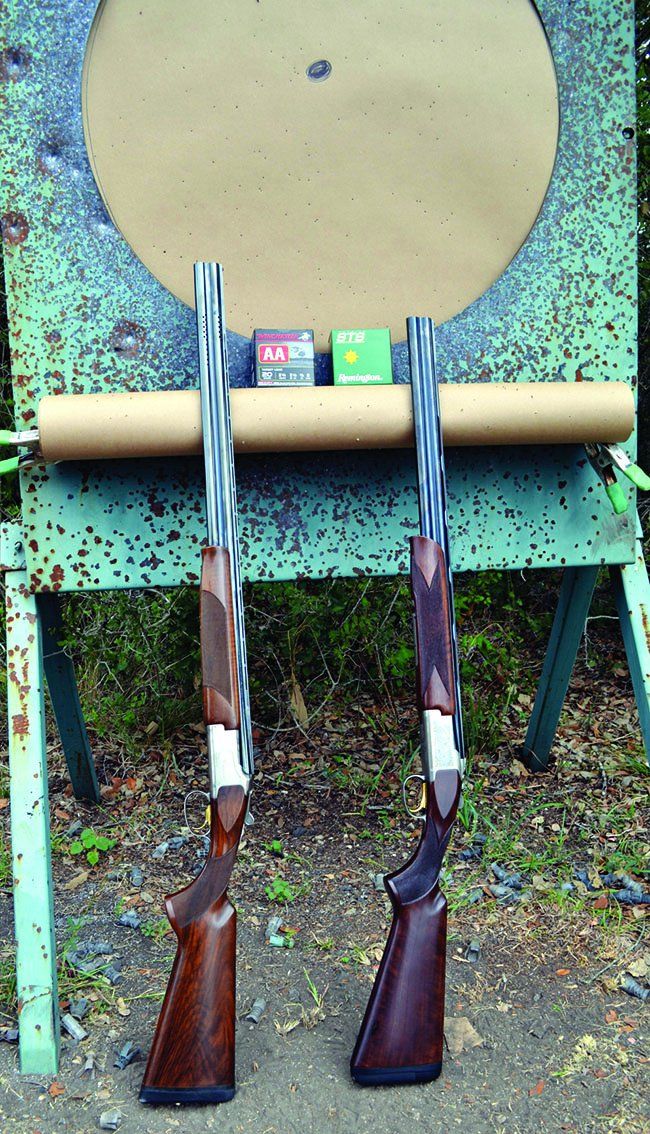Browning over-and-under shotguns have been a staple on the shooting market for longer than many veteran wingshooters would like to remember. In the simplest terms – they work. Naturally as time rolls on, innovations to help make the shotguns more user friendly, handle and perform better, and just make them more appealing to the eye are tossed into the mix. A good example is the transformation of Browning offerings in the Citori Model 25 line, as in 325, 425, 525, 625 and the current 725.

The latest smokepole to find its way into hands of hunters and target breakers is the Model 725 in 20 gauge that hit the market in 2014. The main new features to the subgauge over and under are internal — such as a mechanical trigger system, back-bored barrels with lengthened forcing cones, and the Invector-DS choke tube system introduced with the 12-gauge Model 725 a couple of years ago.
To see just how much the Citori had changed, we were able to obtain a Browning Model 325 20 gauge in very good shape. Last produced in the late 1990s, the Model 325 was the first in the line of X25s and has become quite scarce — their owners don’t seem to be too anxious to part with them. The Model 325 we got our hands on had been in the gun safe of an acquaintance for quite some time, but was in excellent shape and provided a good example of how shotguns can change and still stay the same. The veteran 20 gauge featured 30-inch ported barrels and inertia triggers.
While the new Model 725 field version we used in the test carries a suggested retail price of $2470, the veteran used Model 325 in very good shape, if one can be found, is priced at about $1,500. We did not consider the price difference to be a major factor in our evaluation. As Gun Tests readers often point out, we’ll talk about the guns, and the reader can decide if his budget can take the hit.
To check out the two 20-gauge shotguns in a variety of shooting situations, we selected the following test ammunition: On the target range and at the patterning board, we used Winchester AA Target 2.75-inch loads packing 7⁄8 ounce of No. 8 shot with an average muzzle velocity of 1200 fps, and Remington Premier STS Target 2.75-inch loads with 7⁄8 ounce of No. 8 shot with an average muzzle velocity of 1200 fps. For tests in the field, we used Federal Game 2.75-inch loads with 7⁄8 ounce of No. 7.5 shot with an average muzzle velocity of 1,210 fps. There were zero malfunctions with any of the loads in both of the test shotguns. Here are our findings:
Browning Citori Model 725 No. 0135306005 20 Gauge, $2470
Released to the general public in late 2014, the Citori Model 725 in 20 gauge follows a long tradition of Browning’s ventures into the subgauge market.
This field shotgun is both quick and smooth in the handling department, measuring right at 43 inches long and weighing only 6 pounds. With a length of pull of 14.5 inches, the shotgun had a drop at the comb of 1.5 inches and a drop at the heel of 2.6 inches. These dimensions are right on the average mark for an out-of-the-box shotgun, and our team had no problems adjusting to the fit.
Unlike the 12-gauge versions of the Model 725, there is no palm swell in the pistol grip. However, the thin grip with fine checkering was a pleasure to hold and handle. The same checking provides a high-quality grip on the forearm, which is in a modified Schnabel shape.
We really liked the 5-pound touch off of both of the Fire Lite mechanical triggers in the Model 725. Smooth and crisp, the trigger pull on a shotgun may not be as important as the touch off on a centerfire rifle, but a good pull does help put a pattern on targets.
On the clay target range, on the patterning board, and in the field, we found that the new Browning lived up to its advertising claims. Just a little quicker to move with its 26-inch barrel, the Model 725 smacked targets with authority and provided the best pattern when the smokepole was put through its paces on paper. At a range of 30 yards with the Modified choke, the new Browning produced a nearly perfect 54-46 percent pattern (54 percent above the center and 46 percent below) with the pellet spread of the Winchester AA load nearly even across a 30-inch circle. Inside the 20-inch circle at the center of the target, there were 220 pellet hits (yes, we count them) for a solid center punch of 60 percent. This performance was the best of all our patterning tests.
With the Improved Cylinder choke, the Model 725 produced an identical 54-46 percent pattern, with 157 hits in the 20-inch circle for a 51-percent center punch.
Results with the Remington shotshell load were not quite as impressive, but were still quite good. The Modified choke produced a 40-60 percent pattern with 208 hits (58 percent) in the 20-inch center circle; and the Improved Cylinder choke produced a 42-58 percent pattern with 149 pellet hits (55 percent) in the 20-inch center circle.
The Invector DS chokes, which are designed with a brass alloy band at the base of the tube that helps prevent gas and grit from fouling the barrel, are promoted as producing high-quality patterns. In our tests, they did their job.
Our Team Said: It is not a given that the new model on the block will outperform a seasoned veteran, but with the Model 725 in 20 gauge, that is exactly what occurred. The shotgun handled well on the clays course and excelled in the patterning stage of the test. It is well worth the higher price tag, compared to the veteran model in the test, in our opinion.
Browning Citori Model 325 No. 28977NWC33 20 Gauge, $1500
While not as ancient as the legendary Browning Superposed, this Browning Model 325 subgauge dates back to the 1990s and was among the first shotguns produced as part of the X25 series. It has stood the test of time to be recognized by many wingshooters as one of the finest subgauge field shotguns available to scattergun devotees.
The Model 325’s ported 30-inch barrels are both unusual and prized by those who favor a smooth shooting, well-balanced 20 gauge. The longer barrels tend to smooth out the swing of most shooters, and as veteran shooting instructors will tell students: “shooting is a game of smooth, not fast.”

Only slightly heavier than the newest offering in the X25 line, the Model 325 tipped the scales at 6.5 pounds and had an overall length of 46.75 inches. The heft and balance was quite nice, and with an easily adjustable Triple Trigger system, tuning the length of pull for each shooter was a snap. We also liked the feature of various trigger offerings — wide checkered, narrow smooth, or wide smooth canted. Utilizing an inertia trigger system that requires the firing of the first barrel to engage the second, the Model 325 triggers touched off at 4.5 pounds for the bottom barrel and 5.5 pounds for the top. We found this to be acceptable in both cases, with no problems with the minor difference in bottom and top touch off.
As for the fit of the veteran, the drop at the comb of 1.5 inches and drop at the heel of 2.25 inches was close enough to the measurements of the Model 725 that we could find no appreciable difference in the handling quality.
When we moved onto the patterning range, we found that the internal Invector Plus chokes for the Model 325 were not up to the performance level of the Model 725’s Invector DS chokes.
Just like the Model 725, the veteran 20 gauge produced more consistent results with the Winchester loads in both the modified and improved cylinder chokes. The modified choke produced a 48-52 percent pattern with 117 hits (52 percent) in the 20-inch circle; and the improved cylinder choke produced a 38-62 percent pattern with 80 hits (50 percent) in the 20-inch circle.

Using the Remington ammunition, the modified choke produced a 49-51 percent pattern with 146 hits (64 percent) in the 20-inch circle; and with the improved cylinder, the pattern was 34-66 percent with 71 (45 percent) in the 20-inch circle.
While we were satisfied with the patterning performance with the Model 325, it did not meet the standard of the new model. We found no discernible difference in target hits or field performance between the two models. It should also be noted that several after-market choke tubes, both internal and extended, are available for the Model 325 that could improve the patterning performance.
Our Team Said: The minor differences in the looks and feel of the veteran compared to the new kid on the block had us ranking these two shotguns as dead even — until we took a trip to the patterning board. While producing acceptable results with the two loads used in the test, the Model 325 just could not match the exceptional performance of the Model 725. Other than that minor hitch, the veteran model, if you run across one, should be considered a very fine addition to a wingshooter’s collection of shooting tools.
Written and photographed by
Ralph Winingham, using evaluations from Gun Tests team testers. GT






























